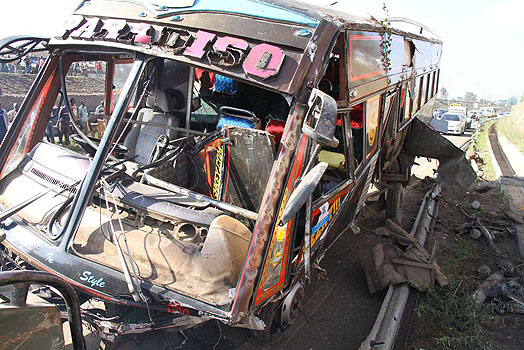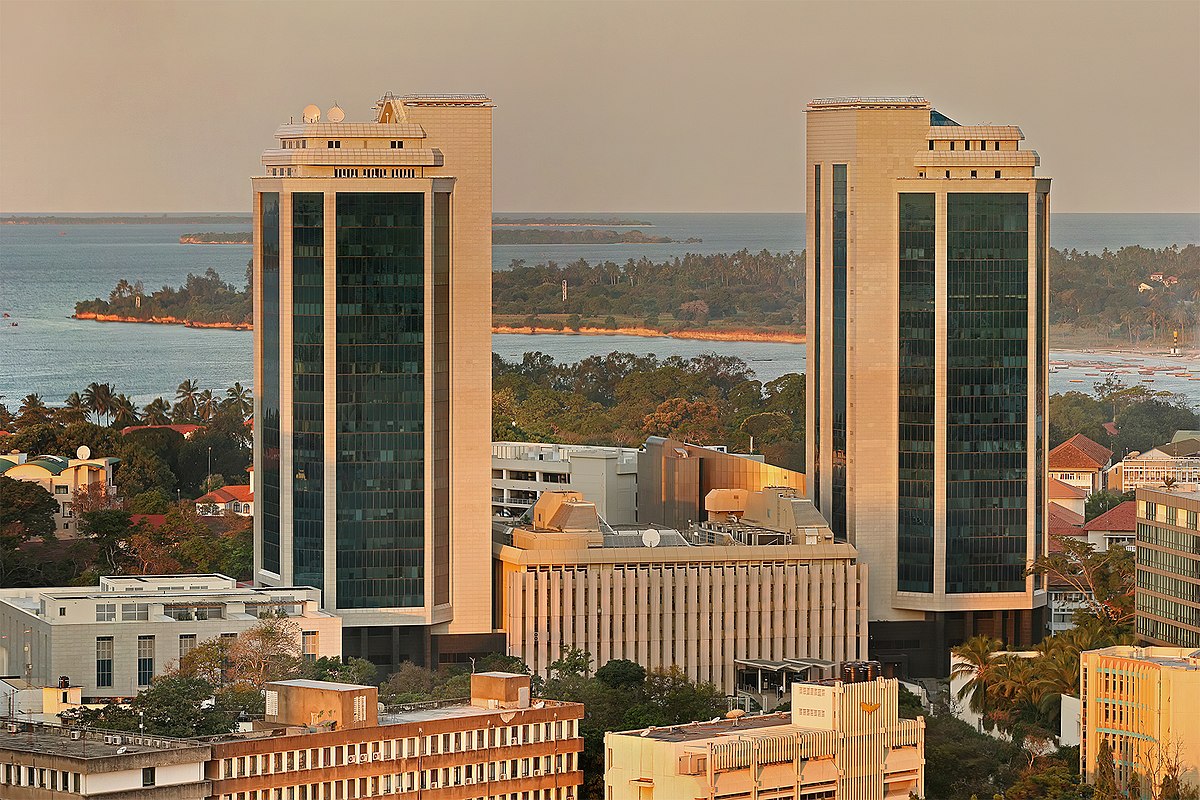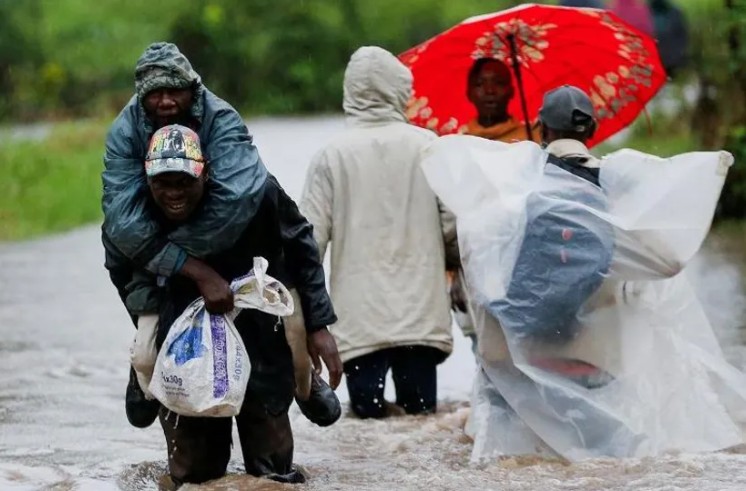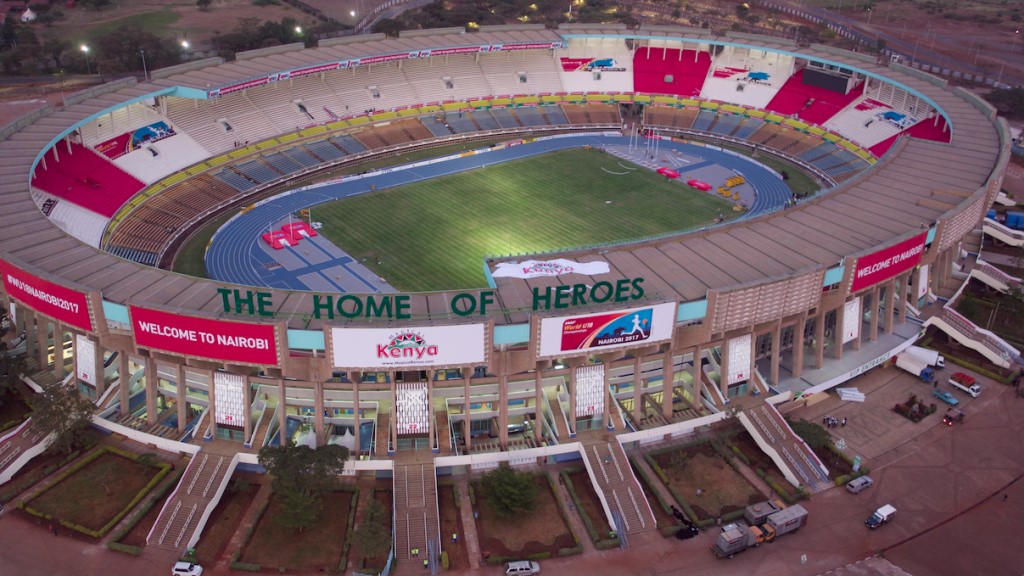Slum life breeds silent cholera risks amid poor sanitation
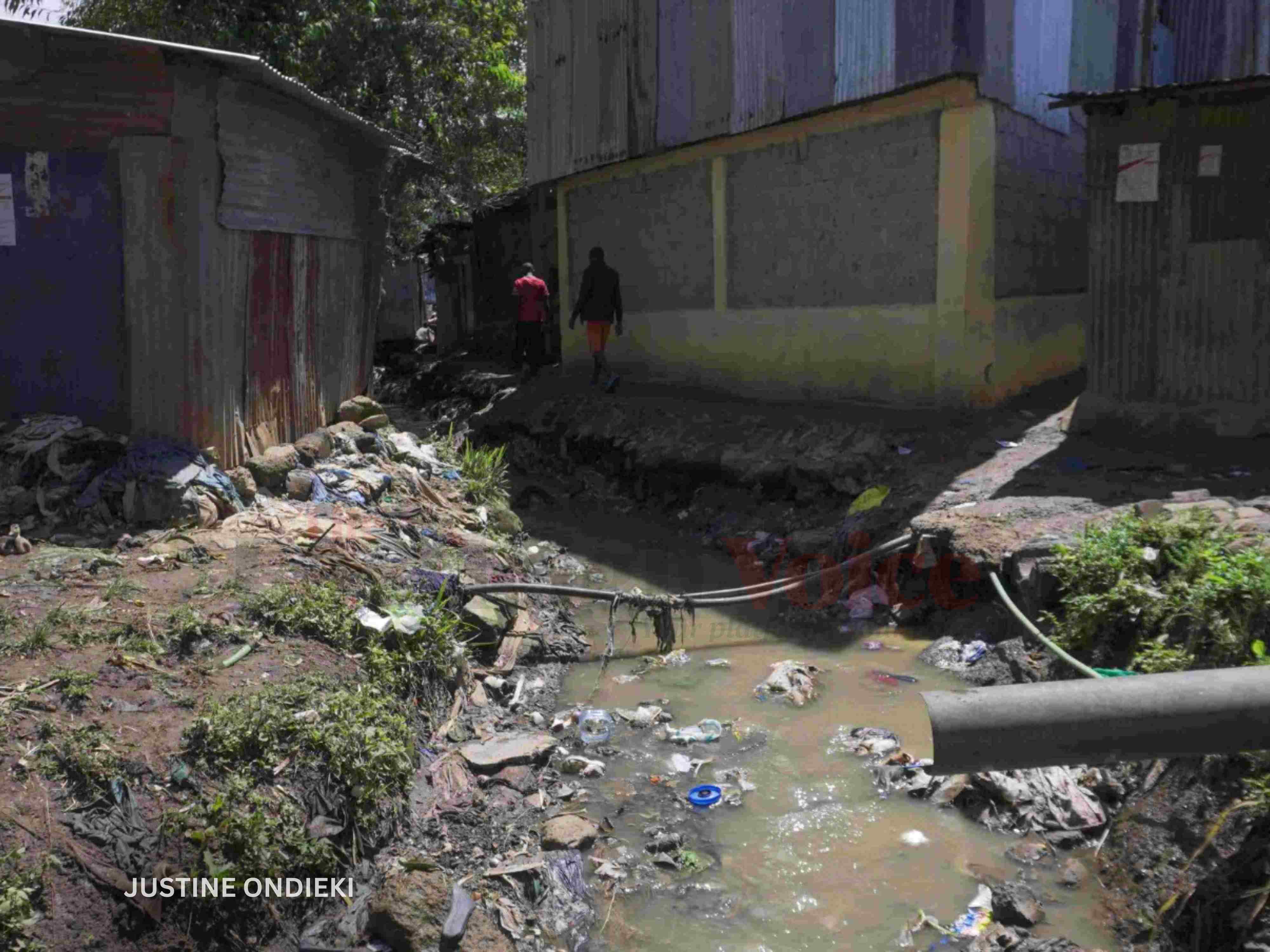
Outbreaks typically escalate in overcrowded areas with broken sewer systems and limited access to clean water, creating the perfect environment for cholera bacteria to thrive.
For Cherles Bongo, a 45-year-old resident of Majengo slums, the ongoing cholera outbreak gripping parts of Kenya feels like a distant threat.
Having spent 22 years in the same cramped neighbourhood, Bongo says he's heard about the disease countless times — but has never witnessed anyone close to him fall ill.
More To Read
- Sudan records nearly 2,000 cholera deaths as conflict exacerbates outbreak: Africa CDC
- Cholera vaccines: What you need to know and why they matter
- MSF raises alarm over worsening cholera epidemic in DRC, over 58,000 cases reported
- Health officials urge vigilance as cholera claims four lives in Narok
- Haiti: UN relief chief implores ‘we have to do better’ to support gang-ravaged nation
- Darfur cholera outbreak kills 315 people in two months, aid group says
Even as health officials confirm at least 125 cases across the country, Bongo, like many in Majengo, carries on with life as usual. His daily routine is unchanged: eating from his favourite kibanda, where hygiene is an afterthought, and drinking water casually without boiling or treating it. This setup is as normal as the bustling streets around him.
“We’ve heard about cholera for years, but honestly, I’ve never seen anyone here fall sick from it,” Bongo says, standing by the banks of the Nairobi River, in the shadow of what was once a cluster of homes, now reduced to rubble after riparian demolitions.
He slowly sips water from a cup, freshly drawn from an open pipe patched together with ropes and old plastic, as if unfazed by the risks.
“As much as we’d like to live clean, the lack of proper services leaves us with no real choice. So we just learn to live with it.”
Bongo is convinced that years of exposure to harsh living conditions have made his immune system nearly disease-proof. He often points out that people in even tougher environments seem to escape illnesses, despite eating yesterday’s leftover meat or washing it down with cheap, illicit brew.
“Some of us have survived worse,” he says with a shrug. “We’re used to this life, and so far, it’s the only one we know.”
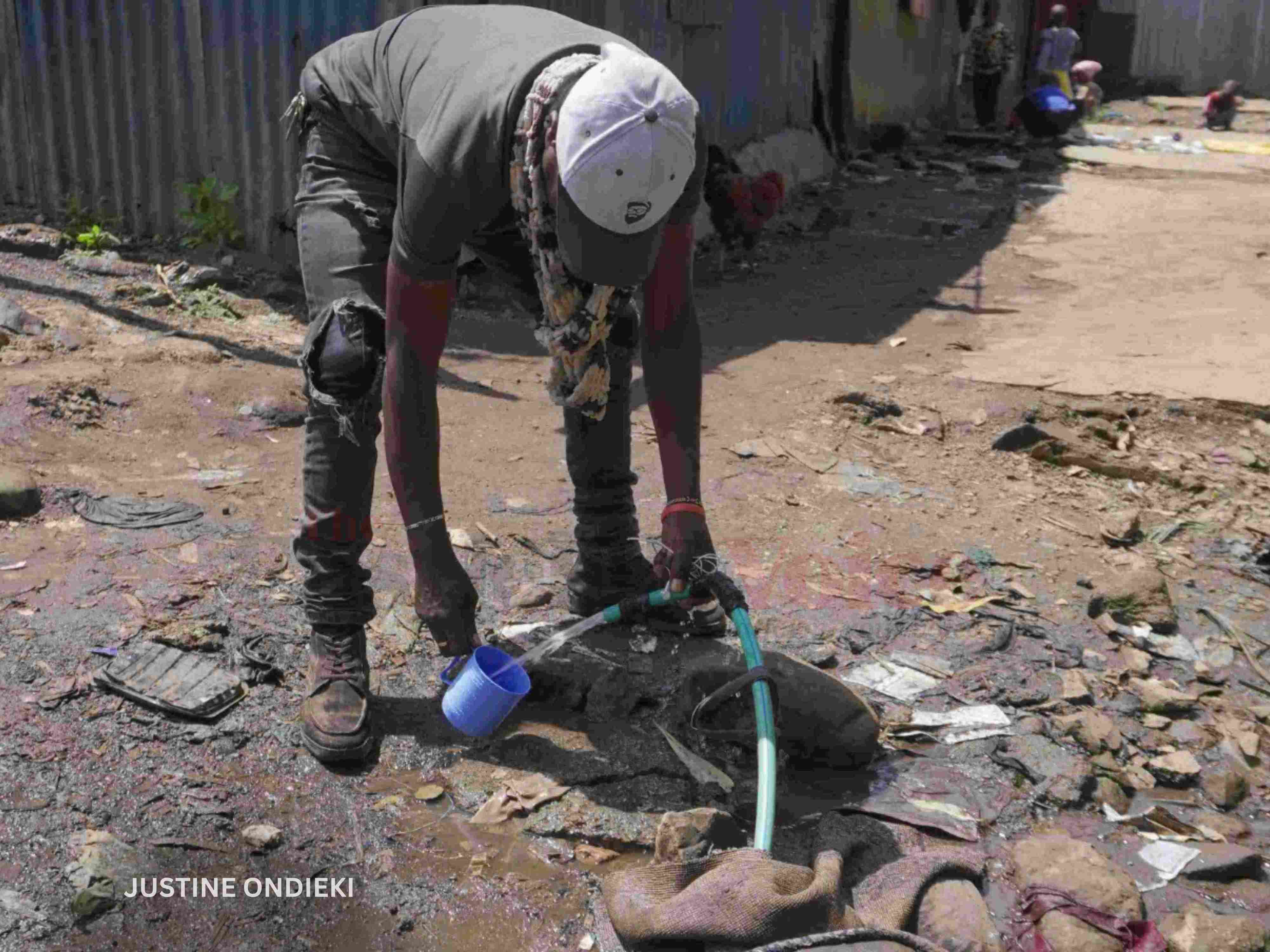 Cherles Bongo fetching water to drink directly from an open pipe in Majengo Slums, Nairobi. (Photo: Justine Ondieki)
Cherles Bongo fetching water to drink directly from an open pipe in Majengo Slums, Nairobi. (Photo: Justine Ondieki)
Faith Syokau, a mother of two living in Nairobi’s Majengo slums, survival is a daily gamble — one she’s long accepted is beyond her control. Surrounded by open sewers, children wading and playing in stagnant water, and the polluted stretch of the Nairobi River, Syokau says her only shield is divine protection.
“I heard on TV that there’s a cholera outbreak, but I haven’t heard of any cases in our neighbourhood, so I believe we’re still safe,” she says, standing outside her iron-sheet home, where raw sewage flows past her doorstep like an uninvited guest. “As much as I want to keep everything clean, the reality is — human waste runs right outside my house every day.”
She admits that maintaining hygiene in Majengo feels like an impossible task, especially when coupled with the harsh reality of poverty. Despite the health warnings, life goes on as usual — meals still come from the same familiar kibandas, where hygiene is often a luxury few can afford.
“We are always told to be more careful, but this is just the way life is for us — it has always been like this with little hope of improvement.
Virginia Mutila Musyoki, a small shop owner who also runs a food business in Majengo slums, has heard about cholera outbreaks too many times to count. Over the years, health workers and community health promoters have offered training and advice on prevention — lessons she takes seriously, even though the reality of her environment often makes it a daily battle.
“Our biggest challenge is the open sewer that runs right past our homes and businesses,” she says, arranging goods outside her shop. “It’s always littered with garbage, used diapers, and human waste. But I make sure to clear the trash around my space so that the sewage can at least flow and not pile up near where I work and live.”
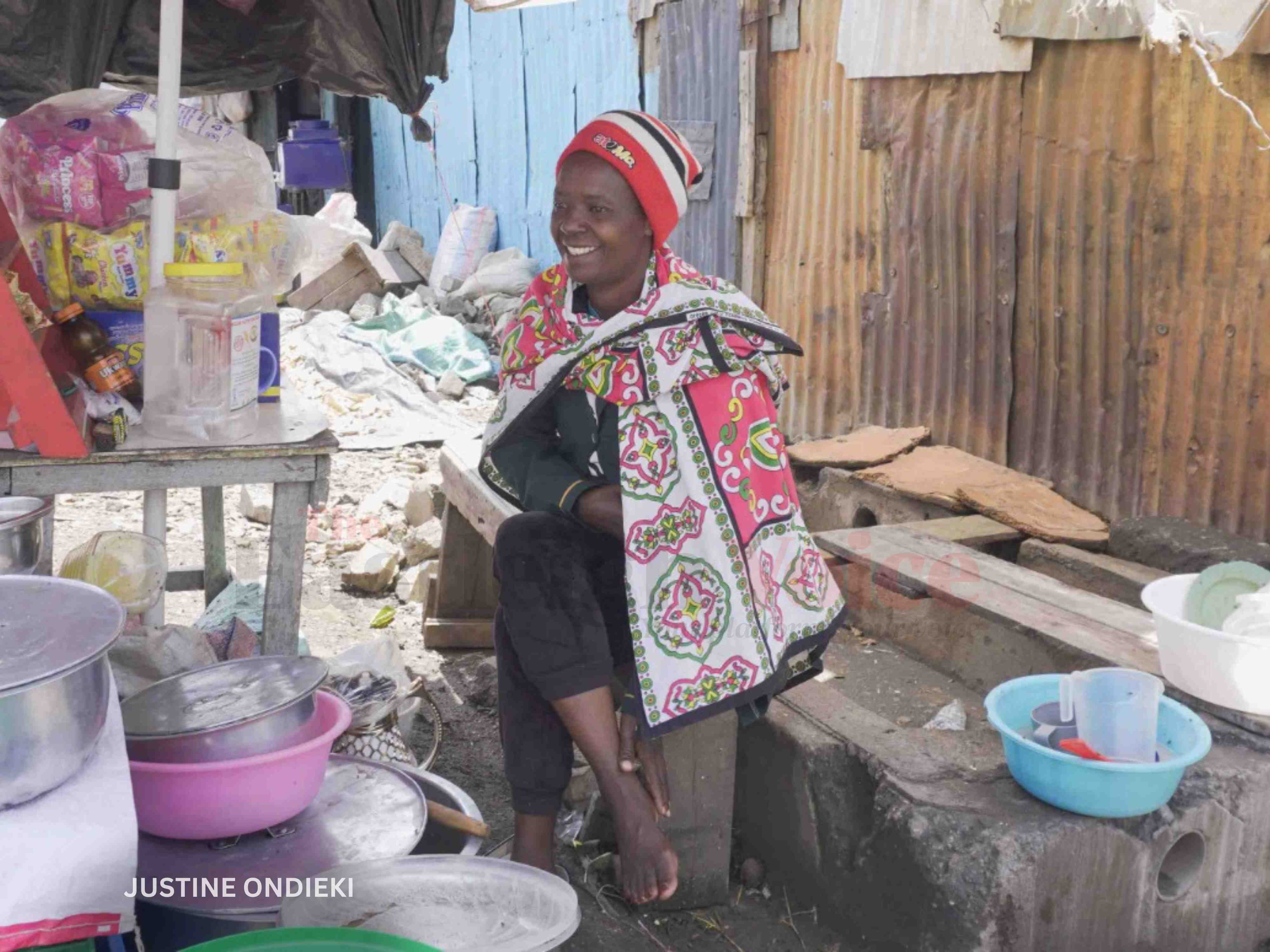 Virginia Musyoki shares her strategy to keep safe amidst the cholera outbreak. (Photo: Justin Ondieki)
Virginia Musyoki shares her strategy to keep safe amidst the cholera outbreak. (Photo: Justin Ondieki)
Despite the tough conditions, Virginia says the health education from community health promoters (CHPs) has encouraged her to take extra precautions. Handwashing is one of the lessons that stuck with her.
“We’ve been taught about the importance of washing hands, and I make sure to practice it — I also encourage my children and family to do the same,” she says. “It’s not easy, but we try our best to maintain personal hygiene.”
Despite awareness, poor sanitation and lack of clean water in slums leave residents vulnerable to cholera.
Dr. Esther Mwaura, a medical practitioner based in Nairobi, points out that many people dismiss diarrhoea and vomiting as ordinary stomach upsets, often only seeking medical help when it's too late.
“These symptoms can quickly lead to severe dehydration if not managed properly. It’s important to drink safe water and use Oral Rehydration Solutions (ORS) to replace lost fluids. It’s also essential to wash your hands before and after using the toilet and before eating.”
She also warns that frequent episodes of stomach-related illnesses can signal deeper health issues.
Cholera remains a significant danger, particularly in informal settlements where clean water and sanitation are scarce.
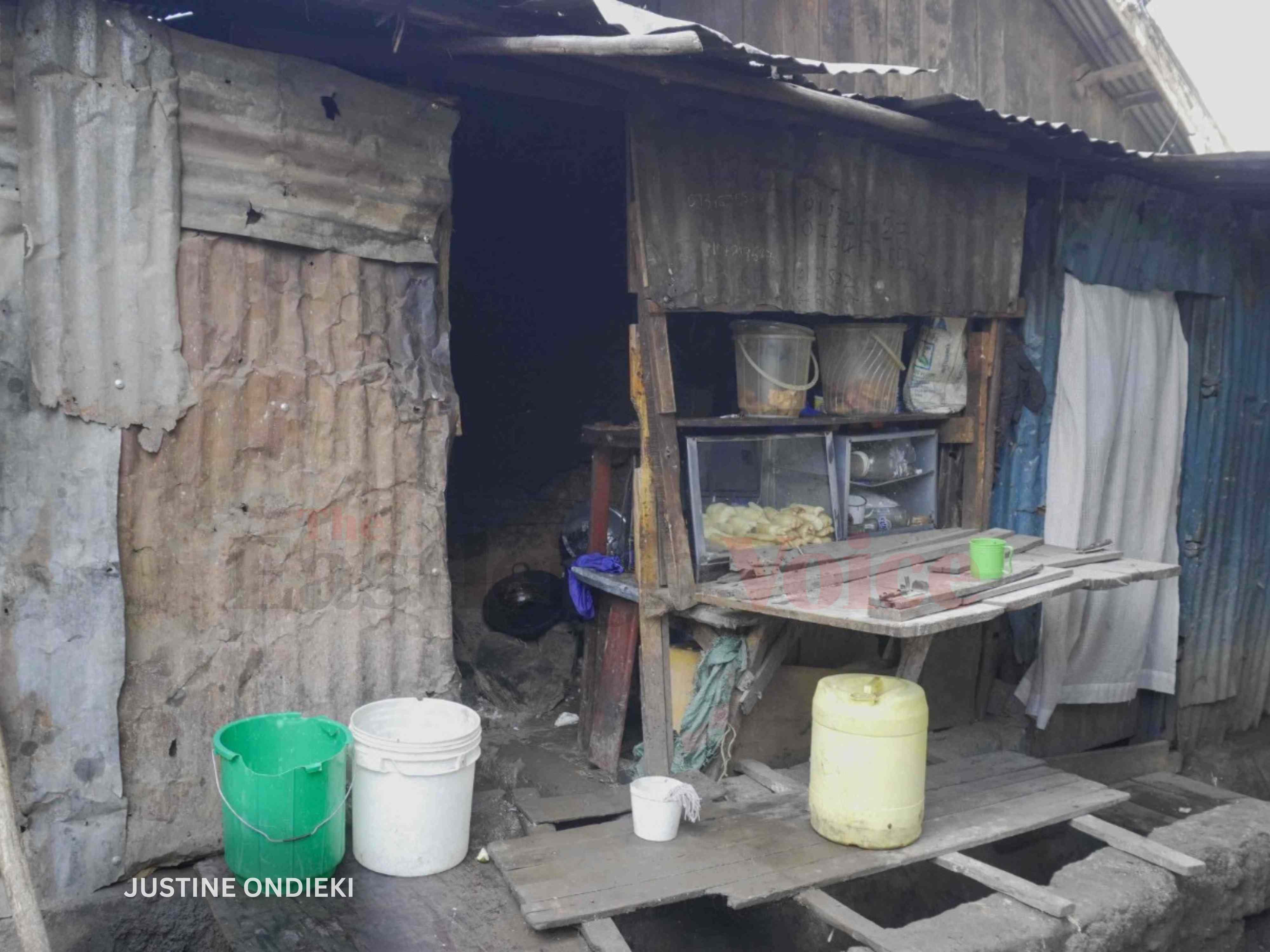 Food being sold around an open sewer in Nairobi's Majengo slums. (Photo: Justine Ondieki)
Food being sold around an open sewer in Nairobi's Majengo slums. (Photo: Justine Ondieki)
The disease, caused by Vibrio cholerae bacteria, spreads through water or food contaminated by human waste, often in areas plagued by open sewers, garbage buildup, and unsafe street food. Symptoms include severe watery diarrhoea, vomiting, and dehydration, which can become fatal within hours if untreated.
Outbreaks typically escalate in overcrowded areas with broken sewer systems and limited access to clean water, creating the perfect environment for cholera bacteria to thrive.
Dr. Mwaura emphasises that simple measures like boiling drinking water, washing hands with soap, and properly cooking food can significantly reduce the risk of infection.
However, for many living in slums, these precautions are hard to maintain without reliable water and sanitation services.
Cholera symptoms typically manifest between two and five days after infection and can range from mild to severe. The most common symptom is severe diarrhoea, often described as watery, resembling "rice-water" stools. This can lead to rapid dehydration, which is one of the most dangerous aspects of the disease. Alongside diarrhoea, frequent vomiting may occur, especially in the early stages of infection.
As dehydration worsens, it can cause dry mouth and skin, intense thirst, low blood pressure, a weak pulse, and sunken eyes. Extreme fatigue is also common. Muscle cramps are another result of losing essential fluids and electrolytes. In more severe cases, a rapid heart rate may develop, while some individuals, particularly children, may show signs of restlessness or irritability.
Without prompt treatment, cholera can lead to shock and, in extreme cases, death, primarily due to the rapid loss of fluids. The disease is a serious public health threat, especially when proper hygiene and sanitation are lacking.
The Ministry of Health (MoH) is calling for increased vigilance following the confirmation of three new cholera cases, bringing the total to 125, with six fatalities. Migori, Nairobi, and Kisumu counties are the most affected, with the highest number of confirmed cases. Public Health Principal Secretary Mary Muthoni has emphasised that the country remains on high alert, with health officials being deployed nationwide to educate Kenyans on how to prevent the disease.
Globally, cholera continues to pose a significant public health threat. In the first two months of 2025, 808 cholera-related deaths were reported across 23 countries in three WHO regions. Africa, in particular, experienced a high case fatality rate, with Angola reporting 329 deaths out of 8,543 cases between January and March 2025. The World Health Organisation (WHO) estimates that cholera causes between 1.3 to 4.0 million cases and 21,000 to 143,000 deaths annually.
Top Stories Today







